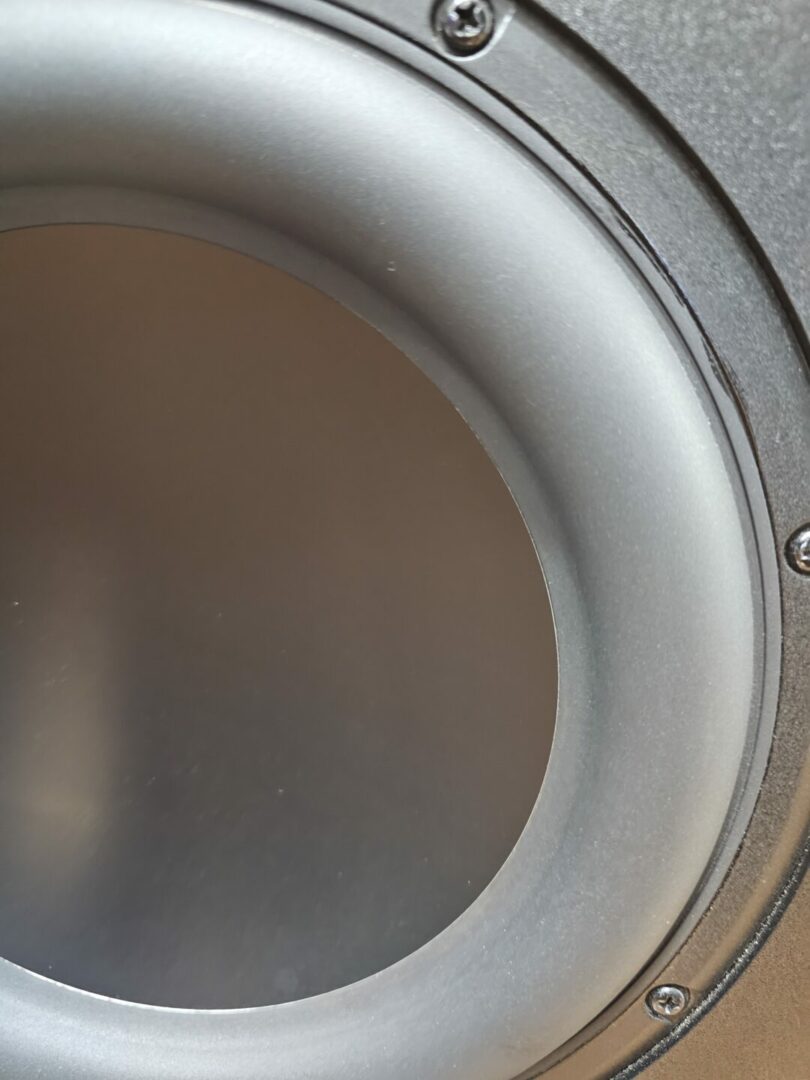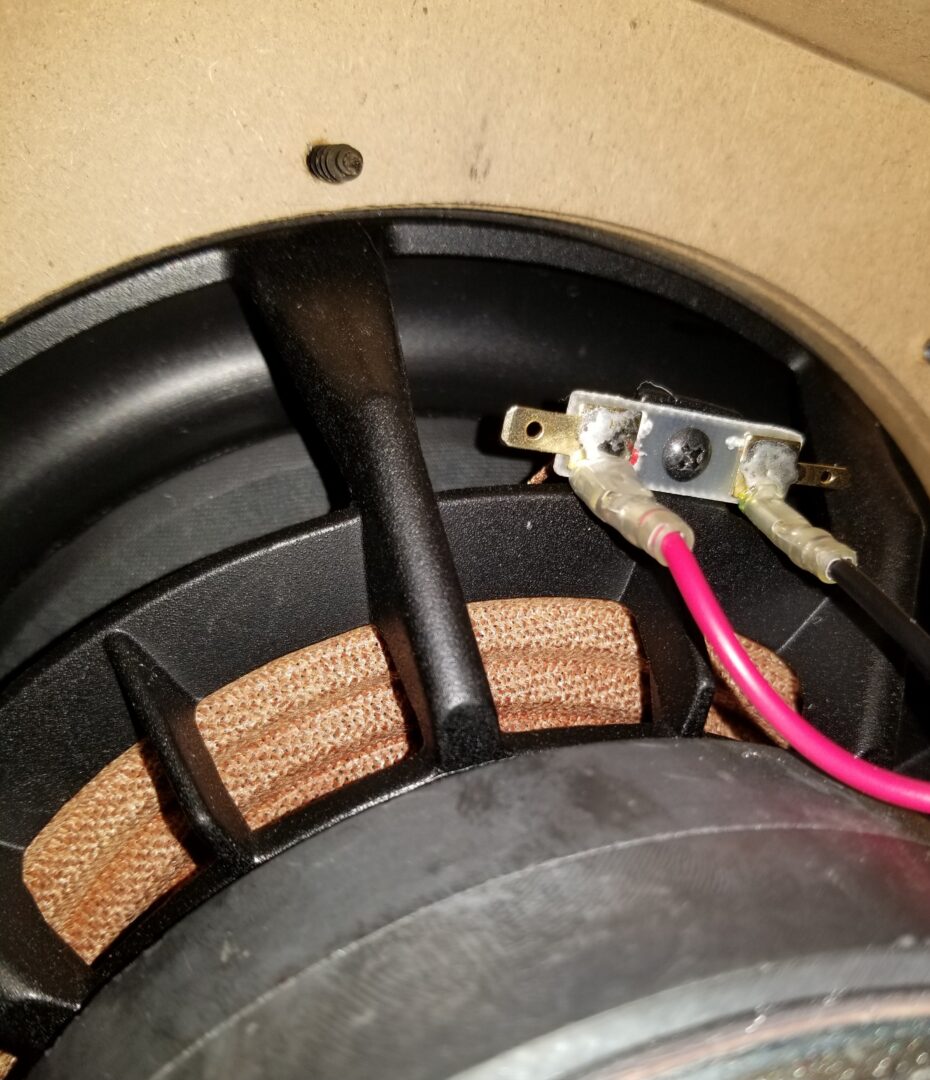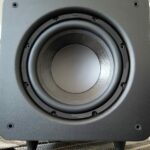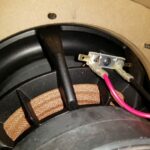Why Are Subwoofers So Heavy? (Potential Reasons Why)
Why Are Subwoofers So Heavy? (Potential Reasons)

From my experience, subwoofers are heavy because of whatever their cabinet might be made of, their size, the size & materials of their drivers, and the types of internal circuit boards, amplifiers, voice coils & magnets it uses. Subwoofers aren’t typically made to be intentionally heavy, it’s simply a byproduct of the complexity of their components.
Picture this, you finally chose the right subwoofer after some decision making, and now you’re excited for it to arrive.
When you get it though, you notice that the box it’s in is heavier than you were expecting.
After plugging it up it sounds great, but why is it so heavy you might be asking yourself?
Well there’s a few potential reasons why, so today I figured we’d go over those reasons that could give some clarity on why this might be.
The Material Their Cabinet Is Made From Influences Its Weight

One of the first and biggest reasons why subwoofers tend to be so heavy is the materials their cabinets are made of.
Being that a lot of them are made of any combination of dense woods, specialized compounds, and/or multi layered material, this constructed into a centralized point in the form of its cabinet lends itself to being on the heftier side.
That’s keeping in mind of course that heavy is somewhat subjective, but when compared with a bookshelf speaker, it can be easy to see the difference.
One of the most common materials I’ve noticed often used in subwoofers is MDF wood.
MDF stands for medium density fiberboard, and is basically wood and pine resin pressed together tightly into a really solid object.
The reason it’s used in a lot of subwoofers and even speakers has to do with the way they produce sound.
When they produce sound from their driver, there’s a lot of extra vibration that can be produced as well, which can subsequently affect the quality of the output from that driver.
This material being used though can help lessen these vibrations for a cleaner sound.
The thing is though, this also can make the subwoofer heavier since this material is heavier.
For instance, one subwoofer I previously covered, the Polk Audio PSW111 is a good example of this.
I mentioned in the review that when I got it, despite its small size, I was surprised that it was as heavy as it was. It was small yet it being made of MDF wood also made it heavier despite it’s small stature.
But imagine a subwoofer much bigger than that and it can be easy to see why subwoofers are sometimes so heavy.
In fact, that actually leads into the next point regarding their size.
The Overall Size Of Them Is A Factor Too
So since we know that a lot of subwoofers tend to use materials that are a lot heavier, it’s important to note that these materials used in actually creating a larger cabinet is probably going to have some effect on its weight.
The larger the size of the cabinet, the more likely than not I’ve found that it’s going to err on the heavier side of things.
But then why do some subwoofer enclosures tend to be so heavy and even large in the first place?
Well without making things too complicated since it’s actually a complex topic, it has to do with the way we perceive sound.
Higher frequency sounds are easier for us to hear than lower frequency sounds, so in order to hear those lower frequency sounds easier, it requires more energy.
https://www.britannica.com/science/ear/The-physiology-of-hearing
Being that the subwoofer is the thing responsible for lower frequency sounds (like the sound of thunder, a drum, etc), drivers have to be powerful enough to convincingly reproduce that effect.
A byproduct of that is the drivers themselves being bigger, and in order to house those more powerful drivers, the subwoofer’s cabinet itself has to be larger — which can also make it heavier.
A little side note about that actually; in my opinion, I’ve personally noticed that just because a subwoofer has a larger driver or cabinet, doesn’t necessarily mean that it’ll have deeper bass as there’s other factors too.
Besides things like proper placement, your seating distance, and acoustically treating your room, the excursion, (or how far the driver can move) and the materials the subwoofer is actually made of can have an effect on how things sound too.
Speaking of materials though, that brings us to the next point
The Material Of The Subwoofer’s Drivers Also Has An Effect
The material of the subwoofer’s drivers can play a big part into its overall weight as well.
Being that the subwoofer has components typically made from some sort of combination of cloth, rubber, and/or metal, this adds to the overall bulk of the sub too.
The bigger these components are, the more of those materials are used — which would also have a part in its weight.
That said, it’s still possible a sub can use specialized lighter materials that can help offset that weight too.
For example a subwoofer like the Klipsch R-120SW, which is an awesome subwoofer I previously covered, uses an injection molded graphite woofer that allows it to put out authoritative sound without the driver itself flexing — which would affect the bass quality.
Not only that, but it’s also a lighter material at the same time which helps with the weight aspect.
Check Availability Of The Klipsch R-120SW Subwoofer
Or the Polk PSW10 which has great sounding bass with a larger cabinet and a 10 inch woofer — which are things that have an influence on it’s weight.
Check Availability Of Polk Audio PSW10 Subwoofer
So of course while it’ll depend on the subwoofer, besides the things mentioned earlier, the materials it’s using for its particular driver is also going to be a factor with regards to how heavy it is.
Here’s a few good ones in my opinion that also vary in their size & weight.
https://easyhometheater.net/the-best-home-theater-subwoofers
Their Internal Composition
Then you have the things like the electronic circuit boards, internal amplifiers, magnets, the voice coil, etc. with all of this being additional weight that’s added to the subwoofer.
Final Thoughts
So as you can see it’s not that subwoofers are made to be intentionally heavy, it’s just that the combination of all these factors can lead to a unit that’s on the heavier side, though it depends.
But hopefully that provides some clarity on things and you have a better understanding on why this might be.
That’s it for now though.
Until next time. Make it easy, keep it simple.
About Me

Jay
Hey everyone it’s nice to meet you. I'm Jay, writer & founder of the site Easy Home Theater. I've been with this hobby of home entertainment for many years now. I decided to create this site to be a helpful resource, and share everything that I've learned from personal experience with you. I also happen to be a huge gamer, lover of all things tech related, and a major fitness buff (love weightlifting)
Contact: Contact Jay
Facebook: https://www.facebook.com/Easyhometheater/
X: https://x.com/easyhometheater
Pinterest: https://www.pinterest.com/easyhometheater/pins/
Instagram: https://www.instagram.com/easyhometheater/
Followit: https://follow.it/easy-home-theater
Bluesky: https://bsky.app/profile/easyhometheater.bsky.social







Leave a Reply